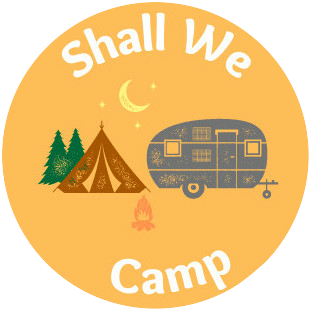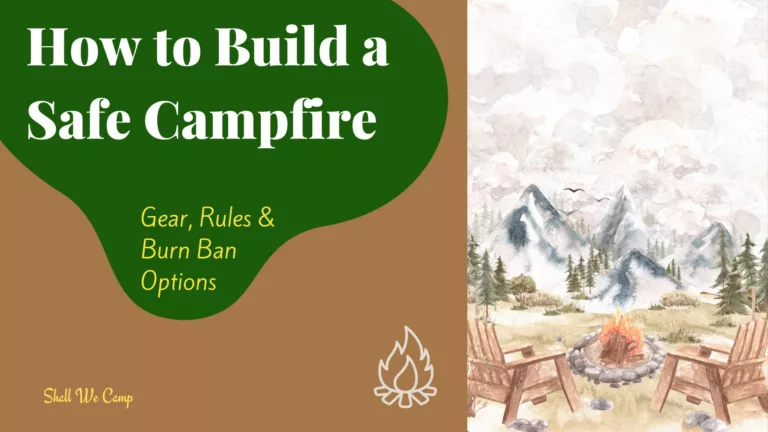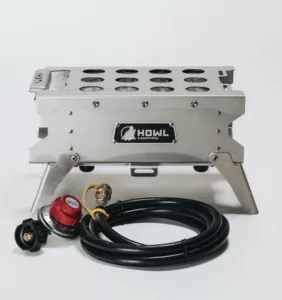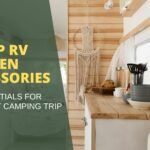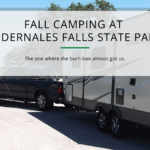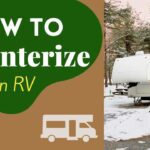Arriving at camp and hearing that first crackle of the campfire is always one of our favorite things about camping. But nothing is worth risking a wildfire. So in this guide, we'll show you how to build a safe, responsible campfire from start to finish, plus easy no-flame alternatives when conditions are too dry or a burn ban is in place.
Campfires are a privilege, not a right. Always check area restrictions before you strike a match.
We love the sound and ambiance of a gentle campfire and in my opinion, it's one of the most relaxing ways to enjoy nature and the outdoors. Let's talk about how to keep it safe while still having fun and appreciating the flicker of the flames.
Affiliate Disclaimer: This site contains affiliate links, which means I may earn a commission on purchases made through these links at no extra cost to you.
Table of Contents
Before You Light:
Check Fire Restrictions
Before you strike a match, check current fire restrictions in the area. Start at the campground kiosk or ranger station, then confirm on the park’s website/app. Also be sure to read any posted signage at your site.
Restriction levels usually fall into three buckets:
Open flames allowed: standard wood/charcoal fires in designated rings.
Propane-only: gas stoves/propane fire pits with on/off valves only.
Total ban: no open flames or spark-producing devices.
Also watch the weather; wind advisories, drought conditions, and red-flag warnings are hard “no’s.” And remember, the final say belongs to campground staff: if a host or ranger says no, it’s NO even if a ring exists.
Choose the Right Location
Use established fire rings first; don’t create new scars.
Maintain ~15 ft clearance from tents/trees/gear and avoid overhanging branches.
Build on bare mineral soil or gravel not duff, roots, peat, or dry grass.
Consider wind: face openings away from prevailing gusts and keep flames small.
Set safety gear within arm’s reach: full water bucket and shovel.
Pro Tips
Keep a large water container filled by the picnic table.
Wear heat-resistant gloves when adjusting logs.
Assign a “fire watcher” whenever the fire is burning.
What to Burn (and What Not To)
Tinder: dry grass, wood shavings, cotton balls with petroleum jelly, or commercial starters.
Kindling: pencil-to-thumb thickness, very dry.
Fuel wood: forearm-thick, seasoned and local. Don’t move firewood long distances (pests).
Never burn: trash, food wrappers, foil, cans, treated/painted/plywood, or anything with glue.
How to Build the Fire (3 Reliable Methods)
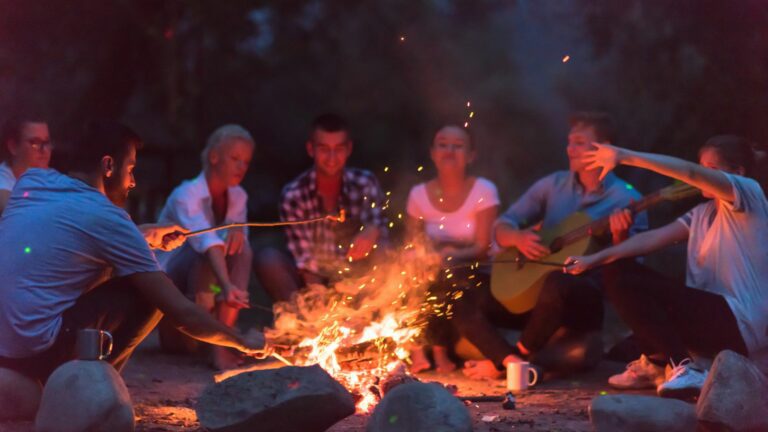
1. Teepee (quick heat, easy start)
Place tinder in the center of the ring.
Lean kindling into a cone over the tinder with small gaps for airflow.
Add a few small fuel pieces around the outside.
Light from the windward side so the flame is pulled through.
2. Log Cabin (steady coals, great for cooking)
Build a small teepee core.
Stack two small logs parallel, then another two across like a square cabin.
As the teepee catches, add cross-laid fuel pieces gradually.
3. Top-Down (long, clean burn with fewer pokes)
Lay the largest logs on the bottom, then medium, then kindling on top.
Add tinder at the very top and light from the top so embers ignite layers below.
🔥 Skip accelerants (gas/kerosene). Use proper fire starters only. 🔥
Lighting & Managing the Flame
Use windproof matches or a lighter; light low and let heat rise.
Keep it small and controlled; add one piece at a time.
Keep all embers inside the ring; guide rolling logs back with a stick or shovel.
If wind shifts or picks up, reduce flame height or snuff temporarily.
Never leave a fire unattended, not even for a quick walk.
Extinguish Completely & Leave No Trace
Coals stay hot for hours (sometimes days) and can smolder in roots and duff, reigniting with a single gust. Fully extinguishing protects nearby trees and wildlife, keeps smoke out of campsites, prevents injuries to kids, pets, and the next campers, and helps keep our favorite parks open.
Even a “tiny” ember can become tomorrow’s wildfire!
Put It Out Completely (Drown–Stir–Drown–Feel)
Spread logs and coals.
Drown with water until hissing stops.
Stir to expose hot spots.
Drown again and stir again.
Feel for residual heat by hovering the back of your hand over the ashes.
Repeat until cool to the touch… no heat, no glow, no smoke.
Leave No Trace: Minimize Impact
Use existing rings; avoid stacking rocks where prohibited.
Pack out all foil, twist ties, food scraps, and trash.
Disperse cold ash only where allowed by local rules.
When in doubt, use a stove instead of a fire.
Fire-Ban-Friendly Alternatives (Cook, Warmth & Ambience)

Cooking (confirm rules):
Propane/butane canister stoves (single or two-burner).
Liquid-fuel/backpacking stoves.
Electric induction if you have RV power or a battery station.
Ambience + Warmth (check restrictions):
Propane fire pits with on/off valves and spark screens (often allowed under “propane-only” stages).
Cozy layers: insulated blankets, warm drinks, and windbreaks do wonders.
No-Flame Camp Vibes:
Warm-tone LED lanterns and string lights.
Bounce light off a light-colored tarp/tent wall for a soft glow.
S’mores without a fire: cast-iron s’mores dip on a camp stove or no-bake bars prepped at home.
Water bucket or collapsible carrier (filled)
Shovel/trowel + heat-resistant gloves
Fire starters + stormproof matches/lighter
Local firewood (or propane stove/fuel during bans)
LED lanterns/string lights for ambience
First-aid kit; small fire blanket (optional)
Want the perfect ending to your night? Learn how to tell the perfect campfire story here.
Frequently Asked Questions
Question: Can I have a campfire during a burn ban if there’s a ring?
Answer: Usually no. A ring doesn’t override restrictions. Follow the posted stage guidelines or ranger instructions.
Question: Are propane fire pits allowed during restrictions?
Answer: Sometimes. Many areas permit propane-only devices with on/off valves during partial bans, but you should always verify locally.
Question: How much water do I need to put a fire out?
Answer: Aim for at least a full bucket for an evening fire. Drown, stir, drown, and feel until absolutely cool.
Question: Is charcoal safer than wood in dry conditions?
Answer: Not necessarily. Charcoal can hide heat for hours. In dry/windy conditions, a propane stove is the safer choice.
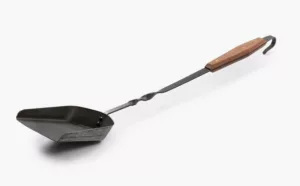
Barebones Cowboy Grill Coal Shovel
The perfect tool for moving and working with coals around an open fire.
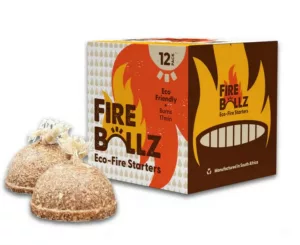
Fire Ballz Eco-Fire Starters – 12 Pack
Ultra clean, eco-friendly fire starter that ignites fast and burns for up to 20 minutes.

Fireplace Gloves – Fire Heat Resistant
Fire Resistant Leather exterior, Insulating aluminum foil middle layer, Heat resistant cotton liner
